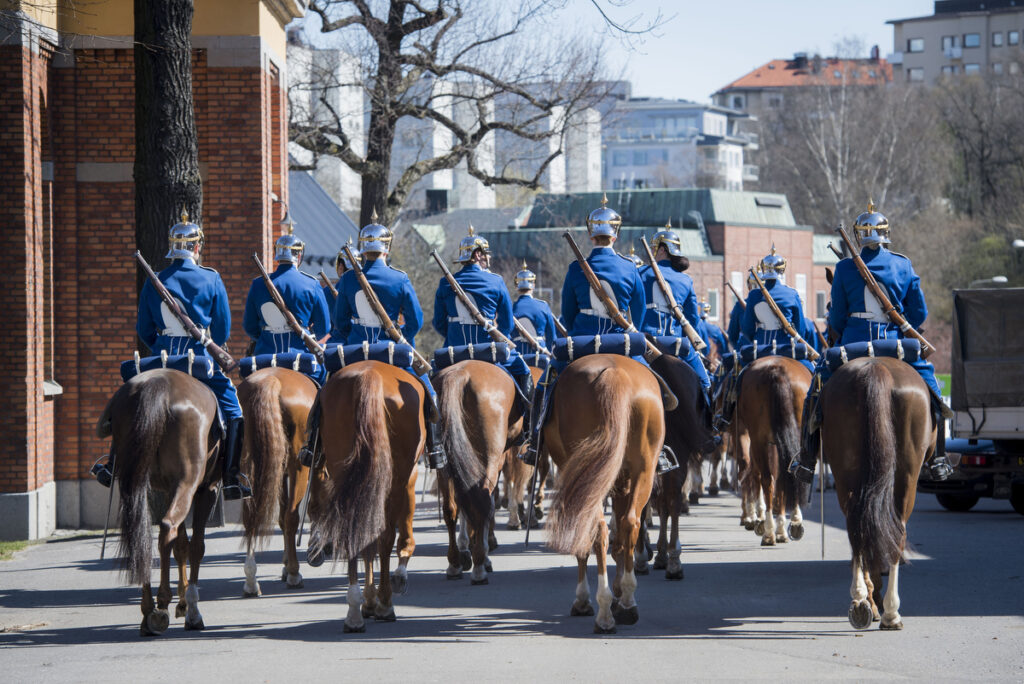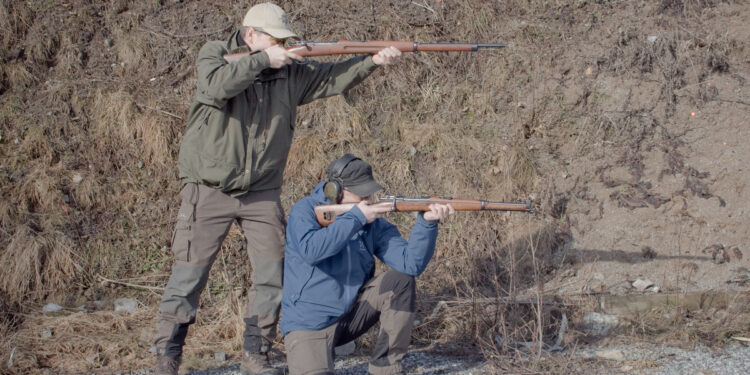By Henrik Jansson
By During the late 19th century, the main armament of most country’s militaries at the time was a single shot rifle, often in inferior calibers from a ballistic perspective. Sweden, during this time, went from a simple-but-sturdy single-shot rolling block rifle in a weak caliber to one of the best repeating rifles of the 20th century in a caliber that, to this day, still has the upper hand on many modern calibers.
The history of the Swedish Mauser began in 1866 when a joint commission was formed between Sweden and Norway to review existing rifle designs with the specific goal of finding a future army rifle for the two countries. The king of Sweden was also the king of Norway, so a joint effort was natural.
Several repeating rifles such as the Henry rifle and the Spencer rifle were considered, but the weapon that was finally recommended by the commission in 1867 was Remington’s rolling block. The armed forces adopted this rifle as the m/1867 in the same year and ordered 10,000 copies from Remington. The weapon was a solid construction in 12.17x42R caliber with a barrel length of 37.2 inches (94.8 cm) and a total length of 53.8 inches (136.6 cm) and a weight of 2.2 pounds (4.3 kg). The weapon, including some carbine variants, were initially ordered from Remington, but in the latter part of the 19th century both carbines and rifles were manufactured on the rifle factor in Eskilstuna and in Husqvarna.

However, 12.17x42R caliber was not optimal with less than good ballistic properties with a velocity of 1266 fps (386 m/s) for a 370-grain (24-gram) projectile. In 1889, 100,000 of the Rolling Block weapons were refitted with new barrels to use the new Danish 8×58R Danish Krag cartridge and the rifle was renamed the m/1867–89.
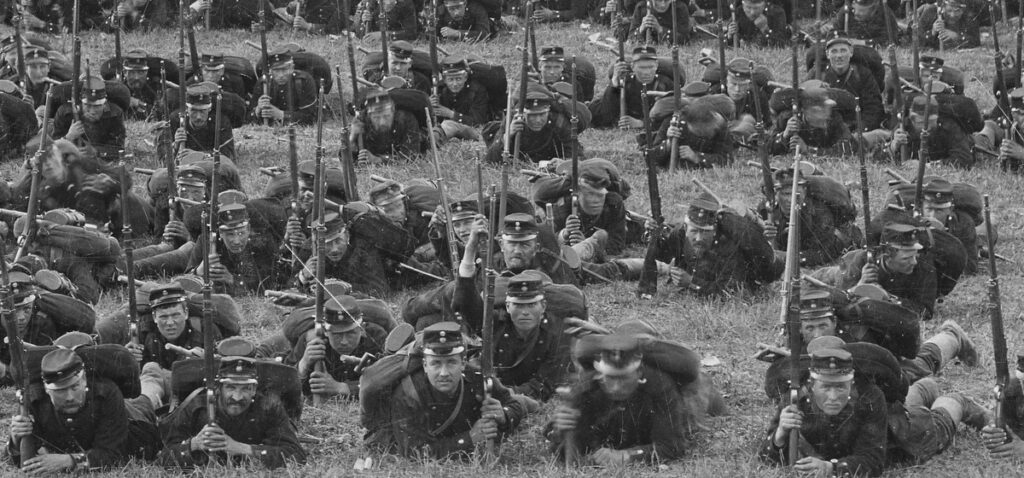
ENTRY OF THE REPEATING RIFLES
In the late 1800s, repeating rifles were developed, and most weapon designers worked with different solutions. The Norwegian Jacob Smith Jarmann designed a single-shot shotgun that was manufactured as a test model at the rifle factory in Eskilstuna and further developed by the weapon designer Ole Hermann Johannes Krag with a tube magazine in the 10.15×61 caliber.
This weapon was advocated in competition with other rifles by a new commission between Norway and Sweden, and the weapon was adopted in Norway in 1881. Further tests were carried out in Sweden and the weapon was adopted in 1883 as a test model fm/1883. In total, 1,500 of these Jarmann rifles were manufactured in Eskilstuna and were tested by the armed forces. But even though they worked well, the trial model was never adopted and the weapons were sold off to civil hunters and sport shooters in Sweden.
However, Sweden did not rest in its quest for a new, well-functioning repeating rifle and took an interest in Paul Mauser’s designs and the rifles that were manufactured for, among others, Spain and Belgium. In April 1892, Sweden tested model 92 and 88 Mauser rifles and in September 1892, three Swedish officers, including Captain Carl Hyltén-Cavallius, head of Carl Gustaf’s rifle factory in Eskilstuna, travelled to the Mauser factory in Oberndorf to get acquainted with and test the latest weapons from Mauser.
THE 6.5×55 mm CARTRIDGE
The discussion in Sweden and Norway for a new caliber was ongoing and the goal was to find a caliber with the best ballistic properties. In November 1893, a Swedish-Norwegian commission stated that the caliber would be 6.5 mm and the bullet should have a weight of 10.1 grams or 156 grain. The Norwegians wanted a rimmed case, but Sweden objected, desiring a regular case. In the end, the Swedes won, and the final case became 55 mm in length, non-rimmed with a 156-grain bullet with an initial speed of about 2297 fps (700 m/s). King Oscar II approved the cartridge on January 18, 1894, and it was named the m/94 cartridge.
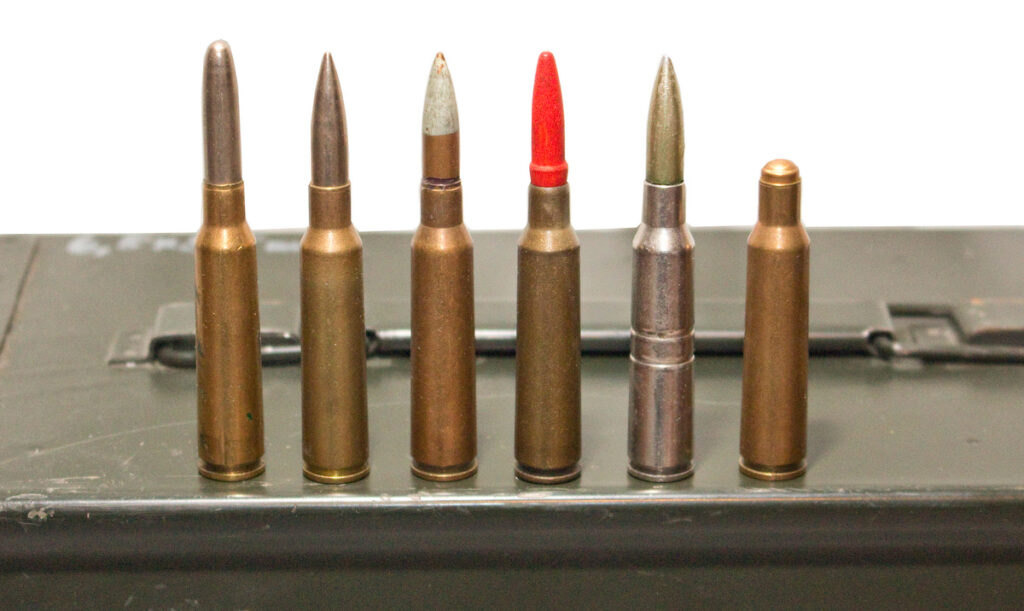
The bullet in the m/94 cartridge was initially a round nose but this was not optimal from a ballistic pointy of view. So in 1925, Norway developed the cartridge further and replaced the round nose ball with a pointed ball (spitzer) with boat tail called “torpedo”. The new bullet had better accuracy than the old round nosed bullet, weighed 139 grains with an initial velocity of 2625 fps (800 m/s). Sweden adopted this cartridge in 1941, retaining the name m/94 but redesignating the bullet name to m/41. Special batches of this cartridge that were found to have a very good precision were selected and got the additional designation “prickskytte” (that is not meant to be offensive, it means “bullseye shooting” in Swedish.) There was also an armor-piercing cartridge, tracers, a blank cartridge with a wooden tip, and a smaller bullet in a regular case with reduced velocity that was meant for indoor practice called “kammar”.
SWEDISH TRIALS AND DECISION
The debate was still ongoing about the rifle and the Norwegians preferred the Krag-Jorgensen. Politics came into play and the Norwegian commission had persuaded King Oscar II to use Krag-Jorgensen’s rifle in Norway. In August 1893, three rifles competed for the contracts, the Mauser rifle, the Krag-Jorgensen, and the Austrian Mannlicher rifle. During the latter part of 1893 and at the beginning of 1894, the main troop trials were carried out primarily at the shooting school in Rosersberg north of Stockholm and at the local Stockholm regiment called Livgardet.
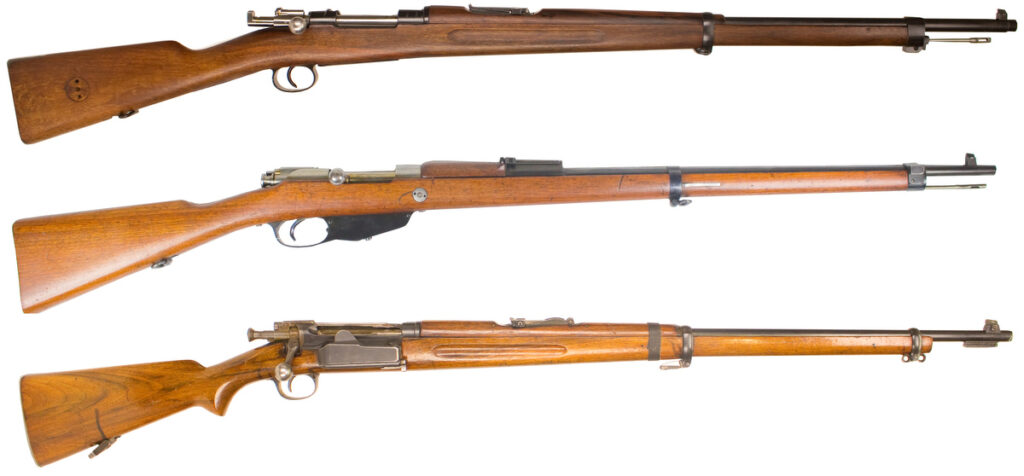
Advantages and disadvantages of each of the three rifles were noted during the tests and compiled. Krag-Jörgensen’s advantages were that the mechanism was very good, and it handled bad primers very well. The magazine was separate from the mechanism and cartridges could be inserted one at a time without the need to open the mechanism. The magazine could also be emptied without feeding the cartridges through the mechanism. The drawbacks for Krag-Jörgensen were that the design was old and no longer used by any other country. The feeding of cartridges from the magazine was unreliable and unless the repeating handle was firmly at the end of its travel during reloading of a cartridge, the rifle would not fire.
The Mannlicher’s advantage was a good mechanism which was easy to manufacture. The drawbacks were mainly linked to the magazine which, when filled with cartridges, is completely inserted into the mechanism. Cartridges cannot be loaded one at a time and half-filled magazines worked poorly and if the mag had the slightest dent, would not work. The bolt head of the Mannlicher was a small part, easy to lose and if the weapon was fired without it installed, it might result in an out of battery detonation of the cartridge, potentially damaging the shooter.
The shining star of this trial was the Mauser rifle. The mechanism was very smooth and very resistant to corrosion. The risk of firing the weapon out of battery is non-existent, which could be an issue with the other two rifles. The magazine and stripper clip were robust and easy to manufacture and maintain, and the magazine could easily be topped up by single cartridges without the stripper clip. The magazine is completely inside the weapon and does not protrude in any way, and after the last round, the mechanism is locked open on the magazine follower, so there is little risk that the soldier thinks he is reloading another round but ends up with a “click” as the magazine is empty.
The only real disadvantages of the Mauser that was identified was that the action had to be pulled all the way to the rear of its travel for the shooter to be able to refill the magazine and the cartridges can’t be removed from the magazine without feeding them through the chamber and extracted by working the action. This is not entirely true as you are able to, with a bit of finger dexterity, get the cartridges out by hand from a Mauser m/96 without the need to feed them through the chamber.
The advantages listed for the Mauser rifle far exceeded its disadvantages and it was considered better than the Krag-Jorgensen and the Mannlicher. It was therefore chosen as the new standard rifle for the Swedish military. However, the Swedes came very close to choosing the Krag rifle, which was chosen for the Norwegians, and had the favor of the king. It is rumored, even if the author cannot verify this, that the king acted on the advice from several officers who at the time had shares in the Krag company. The first rifle to be adopted was the carbine, intended for the cavalry on August 7th 1894 and it was called 6.5mm Carbine m/94.
To facilitate the manufacture of Swedish rifles in Oberndorf, Germany at the Mauser factory, Paul Mauser constructed a new part of the factory called “Schwedenbau.” This building stands to this day and it’s here that the Mauser Museum is located.
MANUFACTURE OF THE m/94 CARBINE AND THE m/96 RIFLE
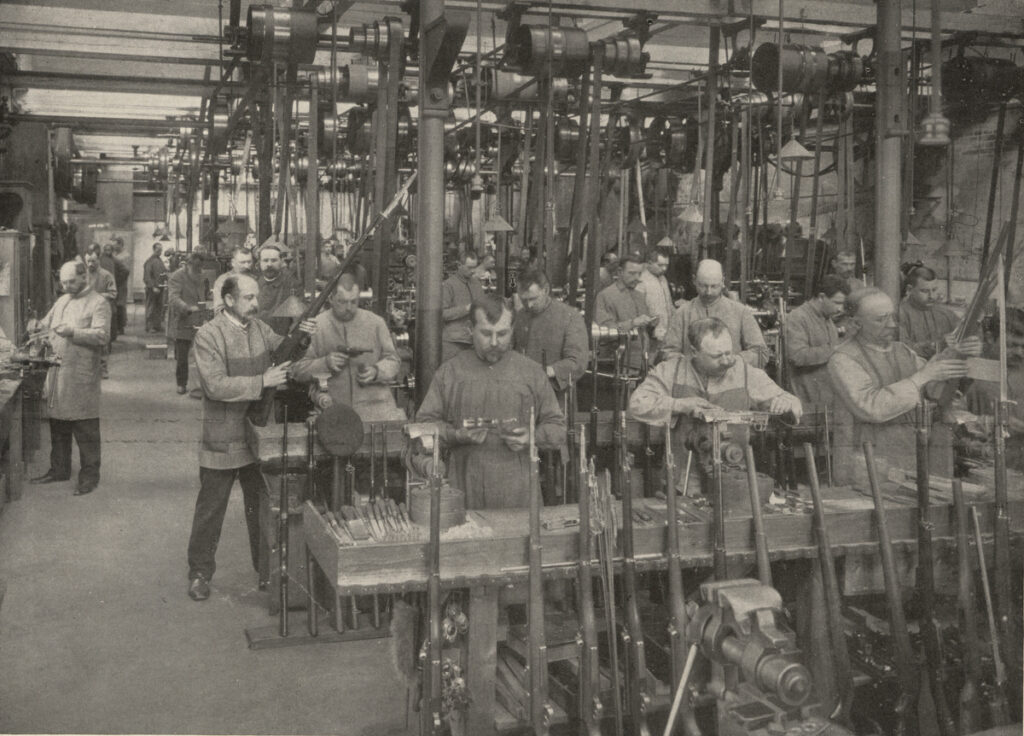
On March 3, 1895, Captain Carl Hyltén-Cavalius went down again to Oberndorf and on July 24, 1895, there were a total of 11 Swedish officers and gun manufacturers who supervised the production of the Swedish carbines on “Schwedenbau.” When the first carbines were manufactured, they were tested and measured in detail, and the carbine with serial number 06 was chosen to be “working model” after which all other carbines were manufactured. 7,000 carbines were ordered in the first batch and then another 5,000. Manufacturing of the first carbines began in September 1895 and by February 1896 all 12,000 had been manufactured and delivered. In December 1895, the Swedish officers returned to Sweden with all the notes and measurements they needed to move the production of carbines to Sweden. Machines were ordered in April 1896 and from 1898 to 1913 about 113,000 carbines were produced on the rifle factory in Eskilstuna.
Several different variants were made of the m/1894 carbine, including one named the m/94-96 carbine for fortification troops with sling attachments on the underside of the weapon instead of on the side. Several lighter training rifles for indoor shooting with reduced charges were also produced. An odd carbine was the one that was made in small quantities for the Swedish Navy called the m/1894-14-87 which had a bracket on the side for mounting the very long saber bayonet m/1887. Most m/94 carbines were made in 1914 to be able to take the m/94 bayonet and were then called m/94-14. This model is still present and used by the Swedish high guard for ceremonial purposes.

Carbine number 06 is today held in the Eskilstuna arms museum collection, where the author gained access to it. This copy is really a piece of Swedish weapon history! The rifle is marked with “6” and the side of the box is engraved with “WAFFENFBK MAUSER OBERNDORF A/N” and there is no control stamp from any weapons inspector.
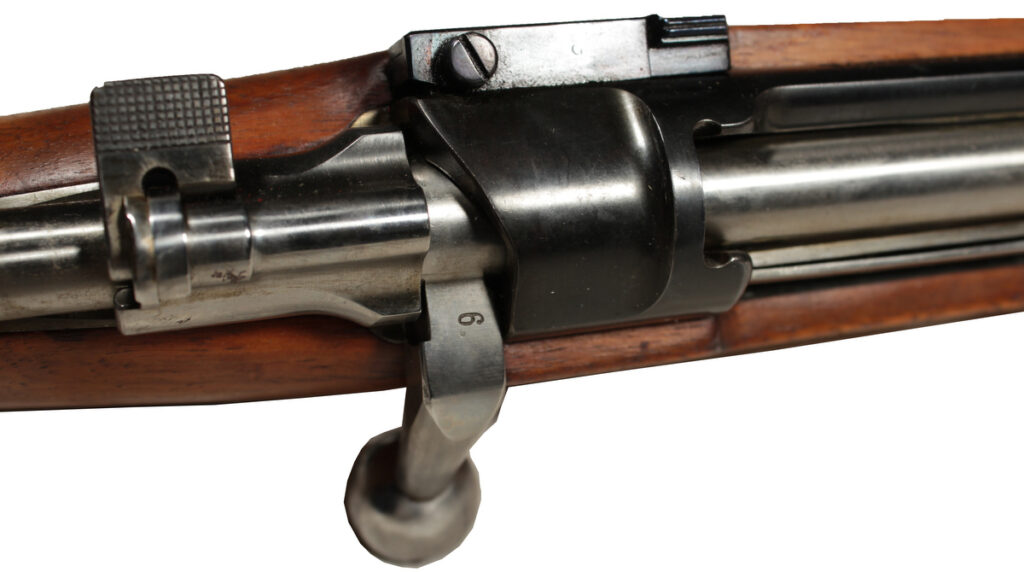
In addition to the carbine, Sweden needed a longer army rifle, and Mauser was to deliver on this as well. The experimental model m/92 developed into the trial model fm/1895 which was adopted as the 6.5mm rifle m/96 on March 20, 1896. Serial production of this weapon started at the rifle factory in Eskilstuna in 1898 with production of about 3,200 rifles. In total, 532,000 rifles were manufactured in Sweden between 1898 and 1925, of which approximately 18,000 were made in another factory in the city of Husqvarna. The Mauser factory in Oberndorf also produced about 38,600 m/96 rifles between 1899 and 1900 due to delays in delivery of manufacturing equipment to Sweden.
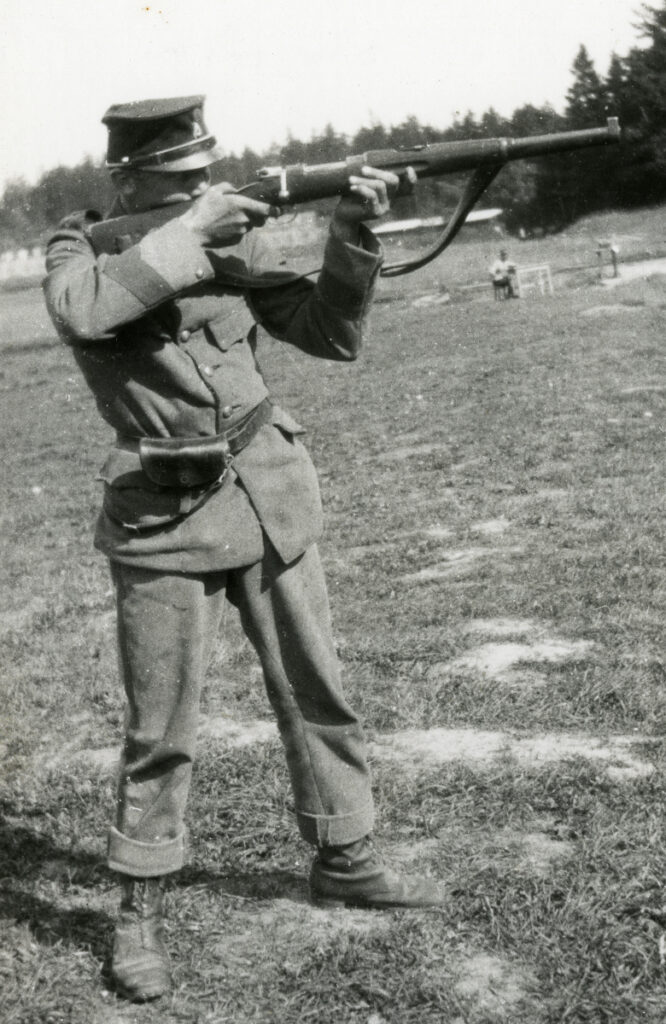
ENGRAVINGS AND OTHER INSIGNIAS ON THE WEAPONS
The engraving and stampings on these weapons provide informative details such as the manufacturing site and year. Using the serial number, you can find even more information about manufacturing time using the right literature. Stamps are also available from the weapons inspector who inspected the weapon. The m/96 rifle that the author has been shooting was made in Eskilstuna in 1918 and was stamped “HK” next to the serial number. This stands for Helge Kolthoff, who was a lieutenant at an artillery regiment and was an inspection officer at the rifle factory between 1912 and 1923. On the weapon’s metal parts, for example on the bolt, there is also a stamped crown, which indicates that this weapon is inspected and test fired. On the underside of the weapon, just behind the trigger guard, there are two crowns and one crown with a “S” under. These are inspection stamps noting the weapon has been serviced by an official army gunsmith. “S” means it has been with Stockholm’s “Tygstation”, which is Swedish for an armory.

A very interesting aspect of many weapons is the small brass counter that was attached to the buttstock of most m/94 carbines and m/96 rifles up until the Second World War. These disks, attached with two small screws, provide information on which unit and regiment used a particular weapon. For example, if it says, “I 3”, it indicates that the weapon has been field with infantry regiment number 3. The letter indicates the branch within the force where, for example, K = cavalry, A = artillery, T = supply troops, and L stands for “Landstormen”, which was the home guard or territorial defense of this time. Furthermore, there can be a number above “I 3”, for example 5, to indicate the company of the regiment in question. Finally, you can also see for instance “No 2136”, which indicates the number of the weapon, i.e., rifle number 2136, of the company, 3 of the infantry branch.
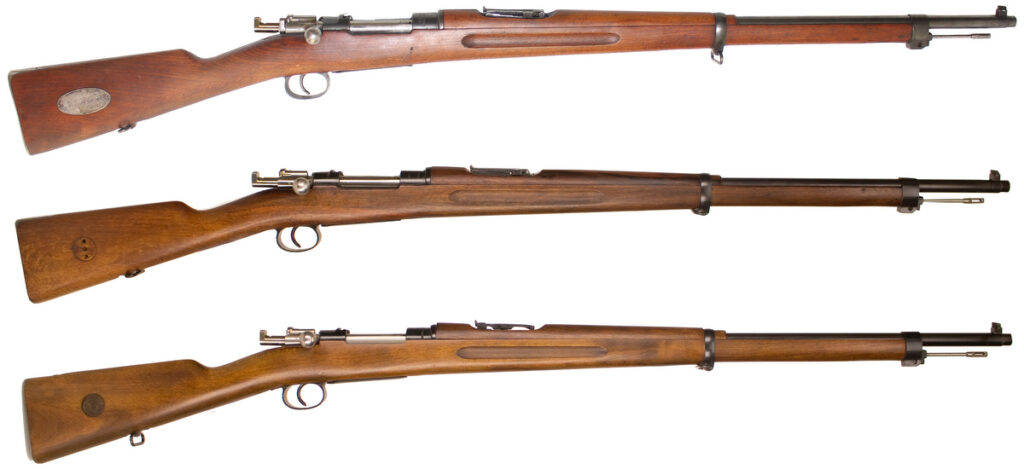
The Navy had its own disks where the letter “M” means the Navy and “MDN” means the North Coast Marine District. Some funny letter combinations on rifles could indicate “VO” which stands for “velociped ordonnans”, which means bicycle orderly or “BF” which was of the military police in the town of Boden and “KKS” which was the Royal Military school. More recently, the disks were put upside down on the stock and provided information to the soldier on how much he would adjust the point of aim with different cartridges and at different distances. The reason why they are upside down is that it would be easy for the shooter to be able to quickly tilt the rifle and read how much he should adjust. There is a plethora of information to be had about these disks and there is a lot of material to read. The interesting thing is that together with all the stamps and engravings on the weapon, you may be able to tell the entire military history of a certain rifle.
OWNING AND HANDLING A MAUSER RIFLE OR CARBINE
The Mausers are a piece of living Swedish military history and the possibility of owning one of these venerable rifles or carbines is very real. The author’s rifle is a Mauser m/96 rifle, manufactured by the factory in Eskilstuna in 1918, so the rifle is reaching an age of 105 years, but the rifle’s accuracy is still solid, and the action is still very good. The rifle was won by a relative of the author in a shooting competition in 1955. An even older one is a carbine m/94 with serial number 147 from Mauser’s manufacturing year 1895, a 123-year-old rifle that has been handled and controlled by the very Captain Hyltén-Cavalius himself. The stock on the carbine had however seen better days and the owner of it replaced it with a newly made one.

These rifles are a dream to handle and shoot. The actions are still as smooth as ever and the accuracy with proper 6.5x55mm ammunition is still very good. With good concentration and support, there is no problem to keep a group of 5 rounds inside 4 inches (10 cm) with the open sights at 109 yards (100 m). The stripper clip is placed in the holder on the rifle, the cartridges are pushed down, and as you close the action, the clip is sent flying. With good practice, you can reload and fire this rifle quite fast, and the obvious advantage to the one-shot rolling block rifle is evident. If it comes down to a close standoff between soldiers, the bayonets of these rifles are sturdy, and the long w/1994 bayonet of the carbine is more of a sword. The trigger of these rifles is crisp, but heavy.
The sights are graded out to 1,000 meters and the accuracy has been tested by Henry and Josh of the well-known 9-holereview YouTube channel. They took the rifle to 600 yards and managed to acquire two hits each on a total of eight steel targets at 100-yard increments with a record-breaking total of 19 rounds, thus beating the Finnish m/39 Mosin-Nagant by two rounds. They pushed it to 1,000 yards using only iron sights and managed a hit after 4 rounds, thus proving the very good accuracy of the rifle and cartridge combination.

MAUSERS IN THE FINNISH WINTER WAR OF 1939
An interesting story about the Swedish Mausers is their involvement in the Finnish Winter War. In 1939, the Swedish voluntary corps was formed, which consisted of Swedish soldiers and officers who fought on Finland’s side against the Soviets during World War II. The weapons they used were, for the most part, self-bought Swedish m/96 rifles and some m/94 carbines. At the same time, the Finnish government bought a large amount of m/96 rifles and ammunition from Sweden for their own soldiers. Altogether there were over 50,000 Swedish Mauser rifles in the Finnish Army around 1944, including about 900 m/94 carbines, all of which probably came from the Swedish volunteer corps. A Swedish “Finnish gun” can easily be recognized by the fact that it is stamped “SA” on the box, which stands for “Suomen Armeija” which means “Finnish Army”.
CONCLUSION
The Swedish Mausers, in all their forms, were, for a long time, the main weapon of the Swedish armed forces for the individual soldier. In 1942, the AG m/42 semi-automatic rifle was adopted and in 1964 the AK4 or HK G3 in 7.62×51 was adopted by the Swedish Armed Forces and the Mauser was phased out. Mausers remained with the home guard and were used in the voluntary shooting community for a long time for target shooting out to 300 m and remains to this day, a somewhat popular hunting rifle.
